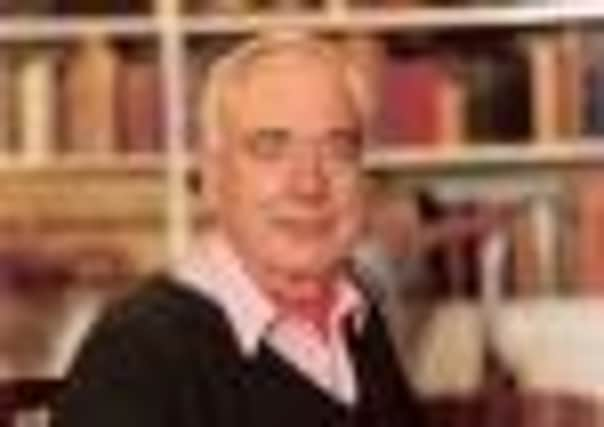Obituary: Colonel Chay Corsar, widened the Duke of Edinburgh Award scheme beyond Scotland’s public schools


Chay Corsar, who died at home in Edinburgh on 9 April at the age of 85, devoted his long life to public service and concern for others. He had exceptional qualities of leadership and was universally admired by those with whom he worked.
Charles Herbert Kenneth Corsar, always known as Chay, was the son of Kenneth and Winifred Corsar. He was educated at Merchiston Castle School and enlisted to join the army before the end of the Second World War.
Advertisement
Hide AdAdvertisement
Hide AdTo his great disappointment he was turned down on medical grounds because of asthma, a decision that was ironical in view of his later career. Instead he went to King’s College, Cambridge, where he studied agriculture. He then went into farming near Pathhead at Frostineb, a farm that has remained in the family ever since. He was a county councillor for Midlothian between 1958 and 1967 and a Justice of the Peace in 1964.
At Cambridge he had joined the university Officer Training Corps (OTC). This was followed by a Territorial Army commission with the 8th Battalion the Royal Scots in 1948.
As an officer he was extremely popular and rose to command the merged 8th/9th Battalion from 1964 to 1967. He commanded the Edinburgh and Heriot Watt Universities’ OTC from 1967 to 1972 and became a full Colonel advising the General (GOC Scotland) on TA matters between 1972 and 1975.
This was not, however, the end of his connection with the army, as he was appointed Honorary Colonel of the First Battalion, 52nd Lowland Volunteers. This was a ten-year appointment, but at the request of his fellow officers he remained in this post for 12 years, retiring in 1987.
He was chairman of the Lowland Territorial and Auxiliary Volunteer Reserve Association from 1984 to 1987 and of the Earl Haig Fund (Scotland) from 1984 to 1990. As a Territorial Army officer he had been widely admired for the quality of his leadership and was universally popular.
In 1966 he had become secretary for Scotland (in effect chief executive) of the Duke of Edinburgh’s Award scheme and for the following 21 years this was to be his main activity.
It was virtually a full-time job and was to be the crowning achievement of his career. The Duke of Edinburgh’s Award was for young people between the ages of 14 and 25, initially only boys, but in 1958 it had been extended to girls and Chay greatly encouraged this.
It blossomed greatly under his leadership. Its purpose was to encourage physical activities, the learning of skills, the giving of service and taking part in expeditions. Those taking part, on successful completion of their programme, could receive a bronze, silver or gold medal from the Duke personally at Holyroodhouse.
Advertisement
Hide AdAdvertisement
Hide AdBefore Chay’s time the take-up of the scheme had been largely from private schools, but Chay was determined to widen it and encouraged participation by young people from the state school sector as well.
He was also keen to involve industry and an example of this was that Tom Farmer got the scheme going among his Kwik-Fit employees.
There must be many young people who benefited greatly from the opportunities this scheme provided. One of his colleagues from that time has said simply that he admired Chay more than any other person with whom he worked in the course of a long career.
During these years, despite a heavy job, Chay found time for several other voluntary and unpaid activities. He was Deputy Lord Lieutenant of Midlothian in 1975, chairman of the Standing Conference of Voluntary Youth organisations in Scotland from 1973 to 1978, a member of the Scottish Sports Council from 1972 to 1975 and Secretary of the Prince’s Trust (Lothian and Borders) from 1982 to 1993.
He was for a many years a member of the Canongate Kirk in Edinburgh and a key member of its financial committee during the kirk’s refurbishment. He was national vice president of the Boys Brigade from 1968 to 1991, chaired the brigade executive and was president of the Edinburgh Battalion for 20 years, something he particularly enjoyed. He commanded an immense Boys Brigade parade to mark its centenary in 1983.
Chay’s time at the head of the Duke of Edinburgh Award scheme came to an abrupt end in 1987 when he suffered a very severe stroke. He defied expectations by making a remarkable recovery, but the stroke left him lame and was to lead later to more serious physical disability.
He continued to do some part time work for the award scheme but was later diagnosed with prostate cancer.
Remarkably, he lived for another 25 years from the time of his stroke, with prostate cancer held at bay by continuous treatment. Amazingly, it was from neither of these things that he eventually died.
Advertisement
Hide AdAdvertisement
Hide AdIt was characteristic of him that, if asked how he was, the cheerful reply was always, “Oh, I’m very well thank you”, although we all knew that was not true. He spent much of the time in his last years at the house that he and his wife owned in Mull and returned to Edinburgh to live only when increasing frailty made life in the country no longer possible.
Even then he was frequently to be seen in Edinburgh in his electric powered buggy, often going considerable distances at its top speed of 8mph, to the local library or the shops.
In 1953 he married Mary Buchanan Smith. She herself became Chairman of the Women’s Royal Voluntary Service in the UK and was awarded the DBE. Without her long and devoted help he could not have remained at home in his last years. He is survived by her and by their two sons and two daughters.
Gavin McCrone